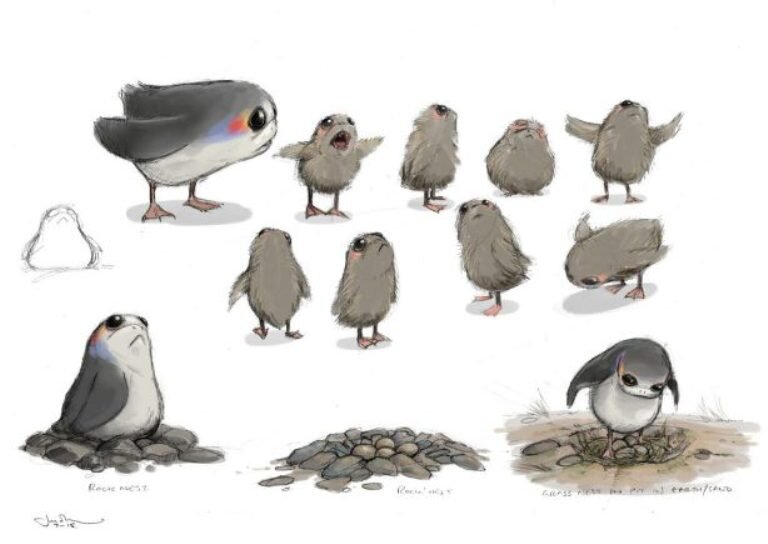The Real Reasons Why Porgs Were In 'The Last Jedi'
After the fall of his Jedi Order, Luke went into exile on the remote ocean world of Ahch-To, the birthplace of the Jedi. Located in the perilous Unknown Regions, the planet played host to a variety of aquatic life. Most notably among the fauna were the porgs, semi-aquatic birds that nested on the islands that dotted the planet’s surface. These tiny little creatures won over movie-goers the moment they waddled and squawked on to the screen. While their design is undeniably adorable, their behind-the-scenes inspirations are even more fascinating.
While scouting for locations to serve as Luke Skywalker’s place of exile, the team finally settled on the island of Skellig Michael. Located off the coast of Ireland, the island boasted the perfect scenery with its lush green rocky hills and crystal-clear oceans. But there was one small problem, Skellig Michael is a World Heritage Site. These sites are places of cultural or environmental significance deemed worthy of preservation and are protected by law. In the case of Skellig Michael, it serves as a wildlife preserve for puffins.
This was no small problem to overcome. While filming for The Last Jedi, the crew were not allowed to disturb the birds in any way. They could not shoo them or scare them off even if it did no bodily harm to the birds. So the film’s creature concept designer, Jake Lunt Daves, had to get creative when devising a solution. At first, he considered digitally removing them from the shots they wandered in to, but this was deemed too time consuming and wasn’t a very cost-effective solution to start with. Trying to avoid them was an equally fruitless endeavor. The island was teeming with puffins by the hundreds, and every one of them were interested in the strange guests on their island with their strange machinery.
It was the film’s director, Rian Johnson, that finally came to the rescue and suggested Daves incorporate the puffins fully into the film and use digital effects to morph the birds into an alien indigenous to the fictional world. So using puffins as a sort of base layer, Daves began sketching various models for what the creature would look like. Taking inspiration from seals, beavers, and, believe it or not, pugs, he made pages upon pages of concept art before he chose the final design. Interestingly enough, he later mentioned in an interview that out of the hundreds of other designs it was one of the first designs he drew that made the final cut.
The puffin-inspired design philosophy did not stop with the porgs. Daves credits the feathery denizens of Skellig Michael as the starting point for all the inhabitants of Luke’s island. In fact, before work on the porgs had even begun, Daves was tasked with creating sentient inhabitants of the island Rian had dubbed simply “Puffin People.” These creatures would go on to become the Caretakers, A race of aliens that maintained the dilapidated ruins of the old Jedi temples on the island, as well as providing company for a certain cranky Jedi.
Initial marketing for the porgs was met with some skepticism. Their equally adorable predecessors from Return of the Jedi, the Ewoks, were not remembered fondly by some fans. Making up a large percent of the runtime, some fans felt the alien teddy bears had overstayed their welcome. Thankfully porgs did not take up much of the film’s time with their antics, and if merchandise sales are anything to go by, Daves had struck gold. Of the many divisive choices made in The Last Jedi, it seems porgs are considered among the more welcome additions to the Star Wars universe.


